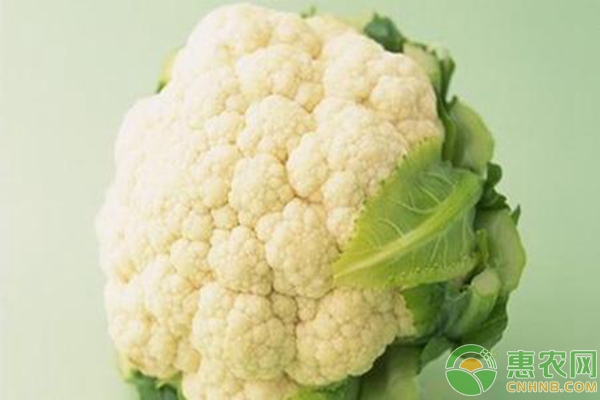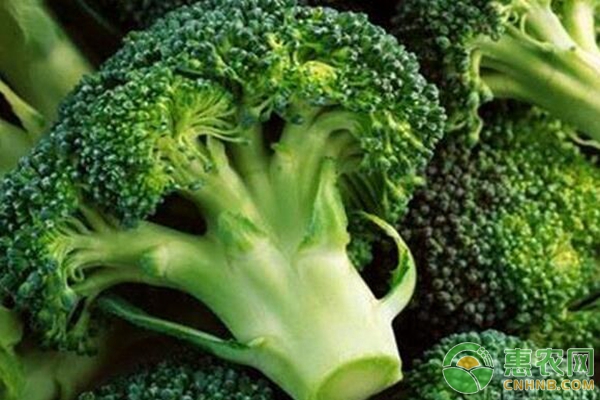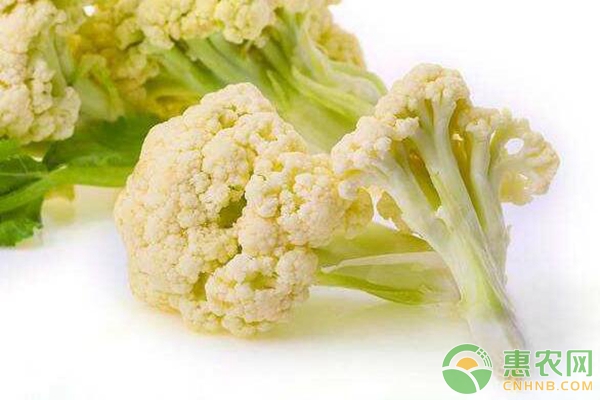Cauliflower, also known as broccoli, broccoli, cauliflower, etc., is a popular vegetable variety in our diet and has a good market prospect. However, in the process of planting cauliflower, it often encounters pests and diseases. Once it is improperly controlled, it is easy to damage the planting interests of the growers. Therefore, the following small series will introduce you to the common pests and diseases on the cauliflower and preventive measures, I hope to help you.

1. Cabbage butterfly
The cabbage butterfly is mainly caused by larvae, and the larva is also called cabbage caterpillar. In the year, the spring and autumn are the most serious.
Control method:
Biological control: In the early stage of the young larvae, spraying the bacterium of Bacillus thuringiensis or the granule virus of the cabbage butterfly has a good control effect on the cabbage caterpillar. The spraying time is best in the evening.
Chemical control: The larvae should be sprayed before the age of 2, before the 3rd instar. Agents can be selected: emamectin, etofenproxil, avermectin, trichlorfon, etc.
2. Plutella xylostella
The first-instar larvae of Plutella xylostella endangered the feeding of plant mesophyll, leaving the epidermis, forming transparent plaques on the leaves, forming leaf cavity, and Plutella xylostella would also damage young stems, young pods and grains.
The peak period occurs: Plutella xylostella has two peaks in the whole year, the first time from mid-May to late June; the second time from late August to late October
Biological control: Spraying with Bacillus thuringiensis preparations can be carried out with water. Protected natural enemies or released after artificial rearing to control the diamond moth.
Chemical control: chlorbenzuron, carbaryl salt, emamectin, trichlorfon, etc.
3. Aphids (Brassica oleracea)
Physical control: Use aphids to have a strong tendency to yellow, and set a yellow sticky board in the field. It is also possible to use the principle that aphids have a negative tendency to escape from silver gray, and hang or cover the silver gray film in the field.
Chemical control: imidacloprid, acetamiprid, matrine (Ya), lambda-cyhalothrin, buprofezin, nitenpyram, pymetrozine, etc.
4. Cabbageworm, Spodoptera litura
Can eat light mesophyll, leave only veins, and even peel the stem cortex. There are 6 to 8 generations in a year, and there are many occurrences in July and August. There are more high-temperature and dry years, and they are often mixed with Plutella xylostella, which poses a great threat to leafy vegetables.
Physical control: trapping adult insects can use black light or sweet and sour pots to trap adults.
Chemical control: ethyl spinosyn, avidin (such as tiger), chlorantraniliprole, indoxacarb, etc.

5. Downy mildew
Prevention and treatment methods: In the early stage of the disease, spray treatment with mancozeb (Bonjiawei), ecrumol, enoylmorpholine, and famoxadone can be used, and sprayed once every 7 to 10 days, even for 2-3 times.
6. Soft rot
More in the late stage of flower ball formation, mainly harmful to the flower ball, can also harm the main stem and leaves. The diseased part was first infiltrated with translucent, then the diseased part turned brown, soft rot, stained white bacteria overflowing the pus, touched sticky and smelly.
Prevention and treatment methods: In the early stage of the disease, you can choose to use spring erythromycin, streptomycin sulfate, allicin (Jingshuang), copper hydroxide, etc. 7 to 10 days, and spray 2 to 3 times.
7. Black rot
In the seedling stage, the cotyledons are water-soaked, and then quickly die or spread to the true leaves. First, starting from the leaf margin, a "V"-shaped yellow (red) brown spot appears at the apex of the leaf margin. Gradually fill the entire leaf edge, the appearance of a circular arc-shaped yellow (red) brown belt.
Prevention and treatment methods: In the early stage of the disease, spray treatment with spring seromycin, copper, copper, copper hydroxide and streptomycin can be used, and the application is carried out once every 7-10 days, even 2 to 3 times.
8. Gray mold
It is common in winter and early spring greenhouses.
Control method: In the early stage of the disease, spray treatment with tebuconazole, procymidone, pyraclostrobin, prochloraz (Xiguang), and pyrimethanil can be used. For cultivation in the shed, you can choose smoke or dust to control.

9. Sclerotinia
In the early stage of the disease, there is a water-soaked brownish spot. The edge is not obvious, the diseased tissue is soft and rot, and there are white or gray-white cotton-like mycelium on the lesion, and the black rat fecal sclerotia is formed.
In the early stage of the disease, spray protection, focusing on the base of the stem of the plant, the old leaves and the ground, the agent can be sprayed with thiophanate-methyl and iprodione.
The above is the guideline for the prevention and treatment of common pests and diseases of cauliflower and the guidelines for medication. The above-mentioned medicaments are for reference only. The specific medication plan should be combined with the actual situation or consult local plant protection personnel.
Neonatal Phototherapy Eye Mask
Neonatal Phototherapy Eye Mask,Phototherapy Eye Mask,Baby Eye Therapy Mask,Newborn Eye Mask
Wenzhou Celecare Medical Instruments Co.,Ltd , https://www.wzcelecare.com